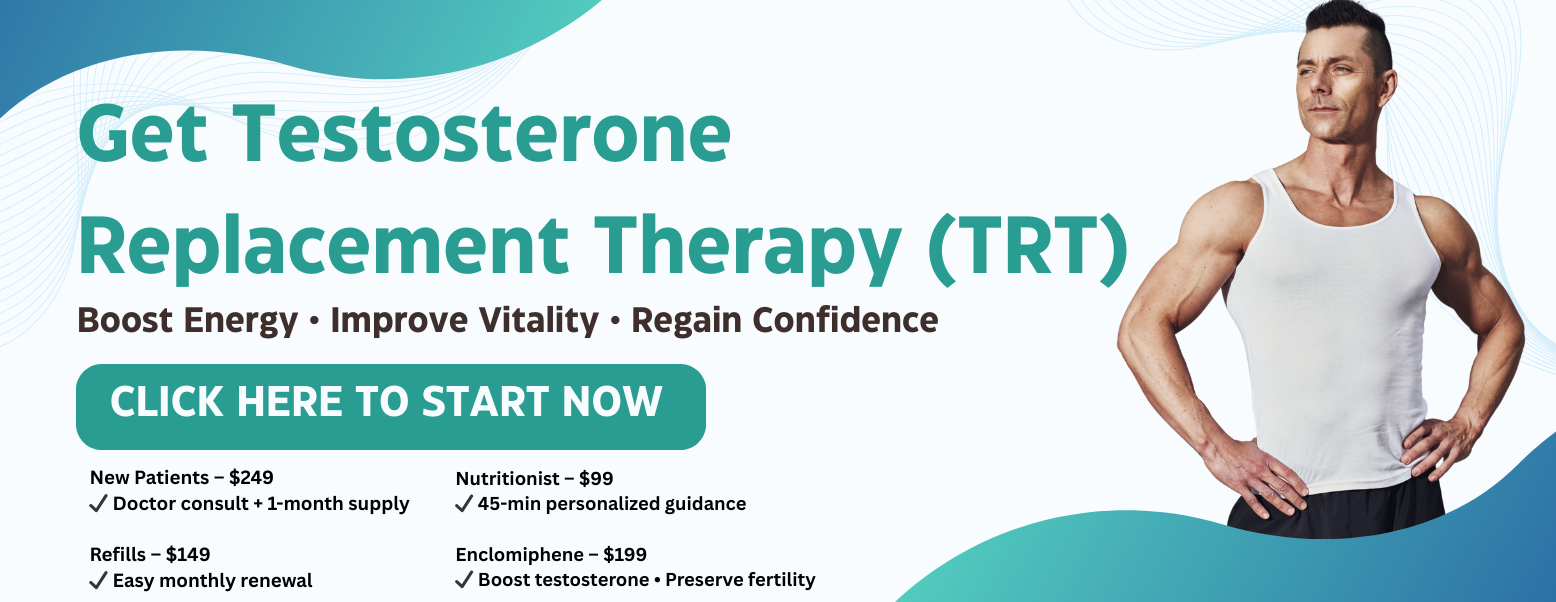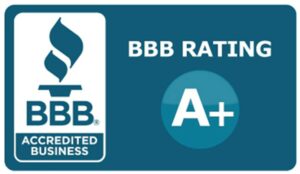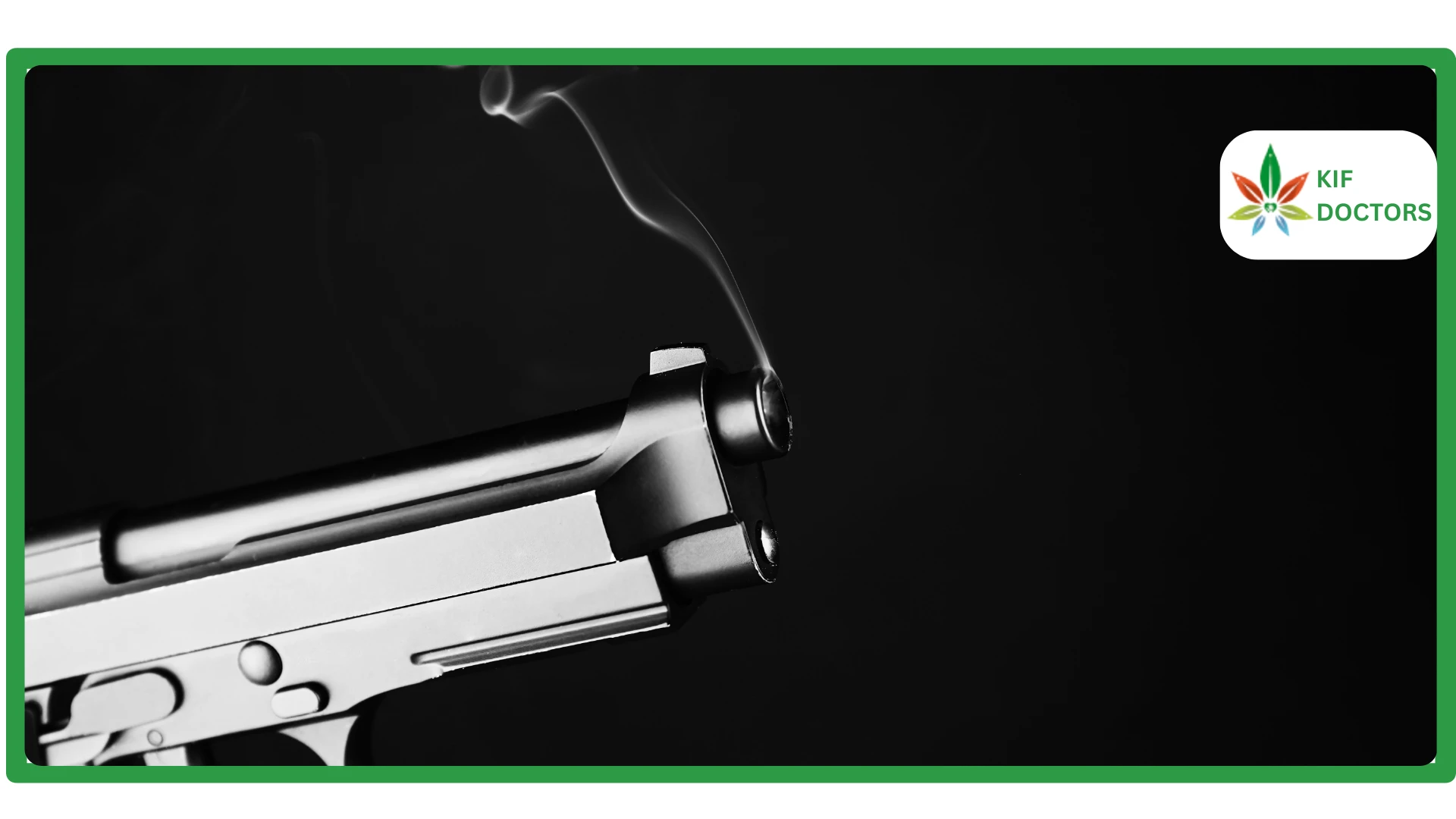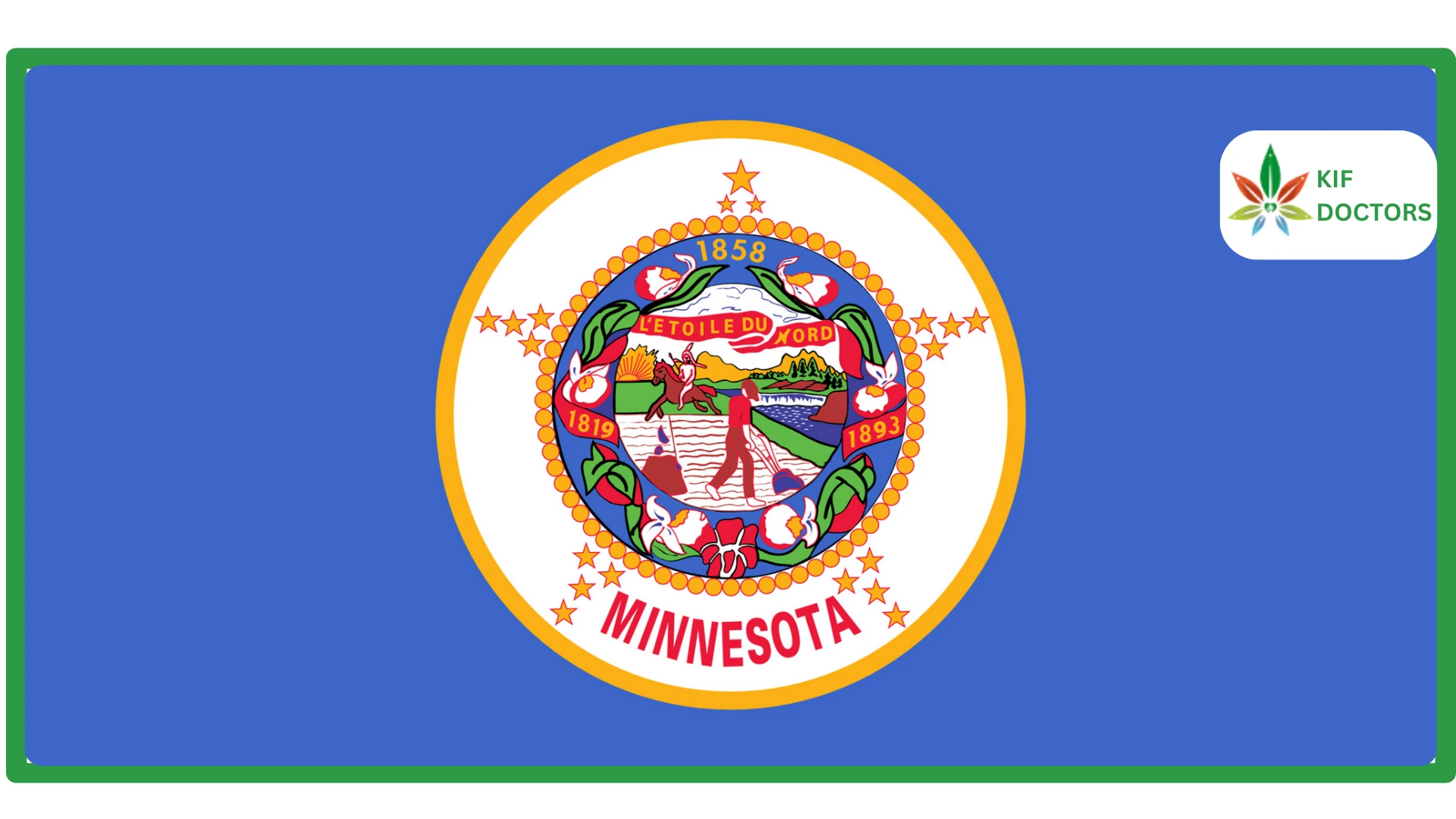Testosterone is the hormone behind men's strength, energy, and physical growth. It promotes muscle development, sexual well-being and vitality. However, there is no single figure indicating the level of how much testosterone is normal.
Testosterone levels vary with time. They increase and decrease depending on age, health, lifestyle, and body functionality. A middle-aged man will have a different level than an old man. Knowing the normal testosterone level of every age group is necessary to make the right decisions related to your health.
This guide describes age-related changes to testosterone. It specifies the signs of low levels, the way to test them, and possible treatment options. This information would be most valuable to a man aged between 25 and 65 who is willing to have a better picture of his hormones and future actions.
Don’t Wait, Reclaim Your Vitality – Click here to Book Your TRT Consultation Now!
What Is Considered a “Normal” Testosterone Level?
- Total Testosterone Normal Range: 300 to 1000 ng/dL (nanograms per deciliter)
- Free Testosterone Normal Range: 5 to 21 ng/dL
These figures do not apply to everyone. The optimum level varies with age, type and constitution, health status, and even time of day. Testosterone levels usually rise in the morning, which is why tests are commonly done early in the day.
Average Testosterone Levels by Age: Key Summary
| Age Group | Average Total Testosterone (ng/dL) | Average Free Testosterone (ng/dL) |
| 10–13 | 1–320 | 0.1–10 |
| 14–17 | 300–1,200 | 5–22 |
| 18–25 | 600–1,000 | 12–25 |
| 26–35 | 550–950 | 10–22 |
| 36–45 | 500–850 | 9–20 |
| 46–55 | 450–800 | 8–18 |
| 56–65 | 400–750 | 7–16 |
| 65+ | 300–700 | 6–15 |
These are typical ranges. Some men work fine at lower numbers. Others need higher amounts to feel good.
What Causes Testosterone to Drop?
Getting older is the main reason. Testosterone goes down about 1% each year after age 30. Other reasons include:
- Being Overweight
- Long-Term Health Problems (Diabetes, Thyroid Issues)
- Sleep Breathing Problems
- Not Moving Enough During The Day
- Too Much Alcohol Or Drug Use
- Too Much Stress And High Cortisol
- Some Medicines (Painkillers, Steroids, Depression Drugs)
- Damage To Testicles
- Bad Eating Habits Or Missing Nutrients
Symptoms of Low Testosterone by Age
Low testosterone shows up differently at various ages:
Ages 18–30:
- Less interest in sex or trouble getting erections
- Hard time building muscle
- Feeling sad or moody
- Not wanting to do things
- Trouble focusing or thinking clearly
Ages 31–45:
- More belly fat
- Worse performance when exercising
- Less energy during the day
- Problems in relationships because of low sex drive
- Hard time sleeping
Ages 46+:
- Cannot get or keep erections
- No morning erections
- Hair getting thinner
- Weak bones or early bone loss
- Feeling hot or sweating suddenly
How to Get Testosterone Levels Checked
If you have these symptoms, you need testing. Here's what usually happens:
1. Blood Test (Gold Standard)
Done early in the morning (around 8 am) when levels are highest. Tests usually check:
- Total Testosterone
- Free Testosterone
- SHBG (sex hormone-binding globulin)
- LH (Luteinizing Hormone)
- FSH (Follicle Stimulating Hormone)
- Estradiol
- Prolactin
2. Saliva or Urine Tests
Not used as much but sometimes helpful in special cases.
3. Follow-Up Testing
Often done 2–3 times to make sure of the diagnosis. This rules out temporary drops from sickness, stress, or bad sleep.
Risks of TRT
- Pimples Or Greasy Skin
- Holding Too Much Water
- Body Stops Making Its Own Testosterone
- Testicles Getting Smaller
- Too Many Red Blood Cells
- Sleep Breathing Problems Getting Worse (Sometimes)
- Problems Having Children
This is why regular check-ups (every 3–6 months) are needed if you use TRT.
How to Get Testosterone Levels Checked?
In case of tiredness, lack of sex drive, mood issues or muscle loss, there would be the need to test testosterone to help improve your health. Proper diagnosis is necessary to aid treatment and prevent issues of hormone imbalances. For any reason, whether you need or desire Testosterone Replacement Therapy (TRT) or merely to find out, this is how to be tested.
1. Recognize the Signs That Warrant Testing
To start with, learn about the signs that would indicate the problem of low testosterone. The typical symptoms are reduced interest sex, difficulties with erections, constant fatigue, muscle loss, fat gain, depressiveness, anger outbursts, and difficulty concentrating. Weak bones and lack of sleep are also experienced among some men. When you have two or more of these symptoms over a period of time then you need to discuss it with a doctor and request that you be tested with hormones.
2. Consult with a Hormone Specialist or Physician
When you think there's a problem, schedule a visit with a medical provider. The best choices are hormone doctors, men's health doctors, or hormone replacement specialists. These doctors know about testosterone deficiency symptoms and test patterns. They'll ask about your history, symptoms, lifestyle, and medical background. They might also do a physical exam. Based on this first check, they'll suggest the best hormone tests for you.
3. Take a Morning Blood Test (Total & Free Testosterone)
Testosterone levels change during the day and are highest in early morning. Blood testing is preferable between 7:00 AM and 10:00 AM. A full testosterone panel comprises the following three tests: Total Testosterone, Free Testosterone, and occasionally Bioavailable Testosterone. LH, FSH, Estradiol, SHBG and DHEA are other hormones tested in good clinics, to see whether there is balanced hormones. Testing just “total testosterone” isn't enough. You need all the information to make good treatment choices.
4. Understand and Interpret the Results
Once you receive your test results, it is significant to learn about them. The normal median total testosterone is an average of 300-1000 ng/dl, but this varies according to age and labs. The action of testosterone is better represented by free testosterone (the aborging form not bound to proteins). Besides the total testosterone being normal, a man may still have a low free testosterone. Your doctor will consider these findings together with the symptoms and come up with what needs to be done next.
5. Repeat Testing and Ongoing Monitoring
A single test is not always the complete answer. Due to stress, sleep, medicines or sickness, testosterone levels may vary. Your doctor may repeat a second test after a few weeks in case the initial outcomes are not clear or do not match up. Once you are on the treatment, a 3-6 months check up makes sure that your levels are healthy and optimum. It will be possible to know whether the treatment works, side effects are controlled and doses are increased or reduced to ensure safe and permanent hormone balance by monitoring the treatment as well.
How to Maintain Healthy Testosterone Levels As You Age?
As men age, testosterone production occurs naturally and begins to decrease. This usually starts in the 30s and declines by approximately 1 per cent annually. This decline is a part of normal aging, but numerous factors in a lifestyle can accelerate it. The positive thing is that some intelligent habits can maintain or even increase testosterone levels naturally. The following are methods which have been tried and found to work regarding how you can maintain the highest level of testosterone and continue with your physical, mental and sexual life well into your 40s and 50s and beyond.
1. Maintain a Healthy Body Weight
Being overweight, particularly with a fattened stomach, may reduce testosterone output significantly. Testosterone gets converted to estrogen by fat cells with the help of an enzyme known as aromatase. It causes a hormone imbalance. Men with excess weight carry a lower range of total testosterone and free testosterone. Controlled eating coupled with regular exercise that helps rid the body of fat can correct the balance of hormones. Testosterone and general health improvement can be seen when a man drops weight by 10-15 per cent.
2. Follow a Testosterone-Supportive Diet
The food you consume can significantly affect the level of your hormones. Some foods decrease testosterone when consumed frequently, while others can assist the body in producing more of it.
Avoid these:
- Processed foods
- Sugary snacks and drinks
- Bad fats (like those in fried or packaged food)
Eat more of these:
- Healthy fats like avocados, olive oil, and fatty fish
- Lean proteins like chicken, eggs, and beans
- Good carbs like oats, sweet potatoes, and quinoa
These foods will fuel your body's production of hormones, minimize inflammation, and provide you with energy to ensure your body functions effectively.
3. Exercise Regularly, Especially Strength Training
One of the most natural ways to increase testosterone is through resistance training. Performances that include compound activities such as squats, deadlifts, and bench presses engage hormonal production and muscle hypertrophy. Testosterone can also be increased through high-intensity interval training (HIIT), enhancing insulin performance and lowering fat. At least 3-4 times a week, put yourself through some weightlifting or resistance training. Do not exercise too much because overtraining and too much endurance cardio will increase cortisol, which is testosterone-damaging.
4. Prioritize Quality Sleep Every Night
Testosterone is primarily generated in your body at this time when you are sleeping. Studies reveal that a week of inadequate sleep leads to a decrease in testosterone by up to 15 per cent. Strive to get 7 to 9 hours a night of a better form of sleep. Create a regular pattern of sleep and wake, reduce the use of electronic devices in the bedroom, and avoid taking stimulant substances like caffeine or alcohol well after bedtime. Men who sleep more not only pump out more testosterone than men who sleep less but also reflect the improved mood, sexual interest and mental concentration.
5. Manage Chronic Stress and Cortisol
When you get into the zone of continuous stress, a hormone called cortisol is released in your body. Excessive consumption of it may reduce your testosterone. Stress also has a way of screwing up your sleep, overeating and suppression of sexual interest as it progressively becomes an unacceptable part of your life. All this dysregulates your hormones. Your body can be calmed down with simple things such as going out and taking a short walk, deep breathing, doing yoga, or taking 5 to 10 minutes alone and quiet each day. Mental health is an equal priority as eating or exercising in terms of your hormone regulation.
Conclusion
Your level of testosterone is not a figure. It is a significant indicator of how you feel, perform and age. If you have a low sex drive, energy crashes, or unexplained weight gain, having your T level measured is your first step to getting in control.
At The KIF, we make it simple and easy to check your testosterone levels with our expert-guided telehealth services. Whether you're having symptoms or just want to control your hormone health, we offer a Free Consultation, a $249 TRT Starter Program, and $149 Monthly Refills. All are made for your unique biology. Don't let low testosterone stop you.
Book your free consultation today with The KIF and take the first step toward a better you.
 Since 2021, Kif offers a streamlined platform to get a medical marijuana card online. We have served more than 45K patients across the United States. Sign Up Now to get the right to use medical cannabis for your health condition without any delay.
Since 2021, Kif offers a streamlined platform to get a medical marijuana card online. We have served more than 45K patients across the United States. Sign Up Now to get the right to use medical cannabis for your health condition without any delay.























